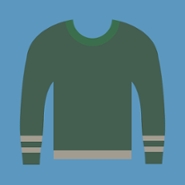Leiden University is making the switch too
We are doing all we can to save energy at the university. Find out how you as a member of staff or student can do about energy and help reduce CO2 emissions.

Warm yourself, not the world
We are setting the thermostat in University buildings to 19°C max (number 2 on the radiator knob). The following tips will mean you won’t get cold.

- Dress warmly.
- Move around regularly. It’s healthy anyway and keeps you warm.
- Coffee, tea, hot chocolate and soup warm you from inside.
- Don’t let the heat escape through open windows and doors. Only ventilate rooms if there’s no active ventilation system.
- Heating empty rooms is a waste. Switch the heating off if there’s a hand-operated radiator in your room and you are leaving for the rest of the day or will be working from home the next day. This also applies to meeting rooms that are not always in use. The heating is turned down automatically at night.
Save energy in the office
By being just a little more efficient with the equipment in your office workplace, you can save quite a bit of energy on an annual basis.

- Turn the lights off if you are leaving the room and won’t be returning for a while – as long as no one else is there.
- Switch the monitor(s) off when you go home to prevent unnecessary electricity comsumption at night and at the weekend. If we all did that, this would save the amount of energy consumed by 12 households in a year.
- Share a departmental fridge with as many colleagues as possible. The fuller it is, the more economical it will be. Don’t set the temperature to lower than 6° C. Regularly defrost the freezer compartment because the less ice, the more efficient the fridge will be.
- Replace fridges that are more than five years old and have a poor energy rating. The purchase will pay for itself in future energy savings.
- Only switch the dishwasher on when it’s full.
Use lab and research equipment efficiently
Of the total energy consumption at Leiden University, 60% goes to buildings with labs because they have energy-hungry flow cabinets, fume hoods, ultra-low-temperature freezers, autoclaves, climate chambers, compressed air fittings and specialist equipment. Be aware of how you use them and follow the guidelines.

- Read the Oxford University Best Practice Guidance for labs.
- Share specialist equipment that is on 24/7 with other research groups. Ensure maximum occupancy and usage.
Fume cupboard
At the highest ventilation setting, a fume cupboard consumes as much energy as 12 households. That is a lot, especially when you consider there are some 570 fume cupboards on the Bio Science Park campus. All that air that has been extracted has to be reintroduced and heated once again.
Keep the sash closed (especially at night and at the weekend). This makes it safer, reduces the amount of heated or cooled air escaping the room and reduces energy consumption. Do this when you leave the lab. In the Gorlaeus Building, you will need to turn the knob to reduce the ventilation setting in addition to closing the sash.
Ultra-low-temperature freezer
- One ultra-low-temperature freezer at -80 °C consumes as much energy per year as an average household. Setting the temperature to -70 °C means a 20% saving. For many organic samples (see this overwiew), that setting is not a problem.
- Have the freezer serviced annually and avoid icing, as this causes higher energy consumption.
- Have a storage system and decide together when samples can be disposed of.
- Read the Cold Storage Best Practices provided by My Green Lab and the International Institute for Sustainable Laboratories.
Autoclave
An autoclave uses 550 litres of water at a time. Only switch it on when it is full.
Save at home
Not only on campus, but also in your study or workspot at home, you can easily save on energy.

- Students can find tips on the Sustainable Student website (in Dutch) and in the Sustainability Guide from our own Leiden University Green Office.
- Switch to Ecosia, the climate-neutral search engine. Ecosia uses the money it earns from your searches to plant new trees.

